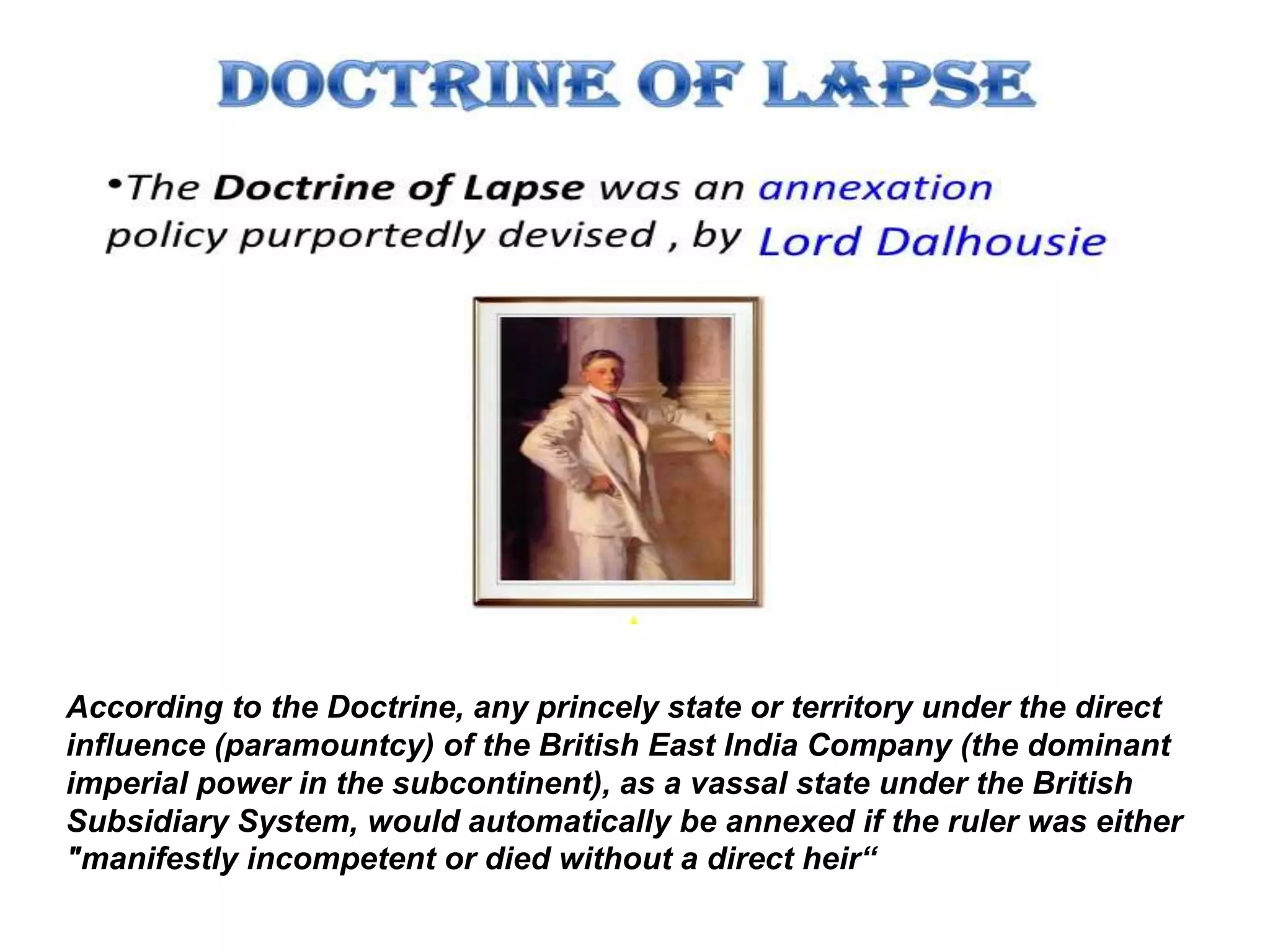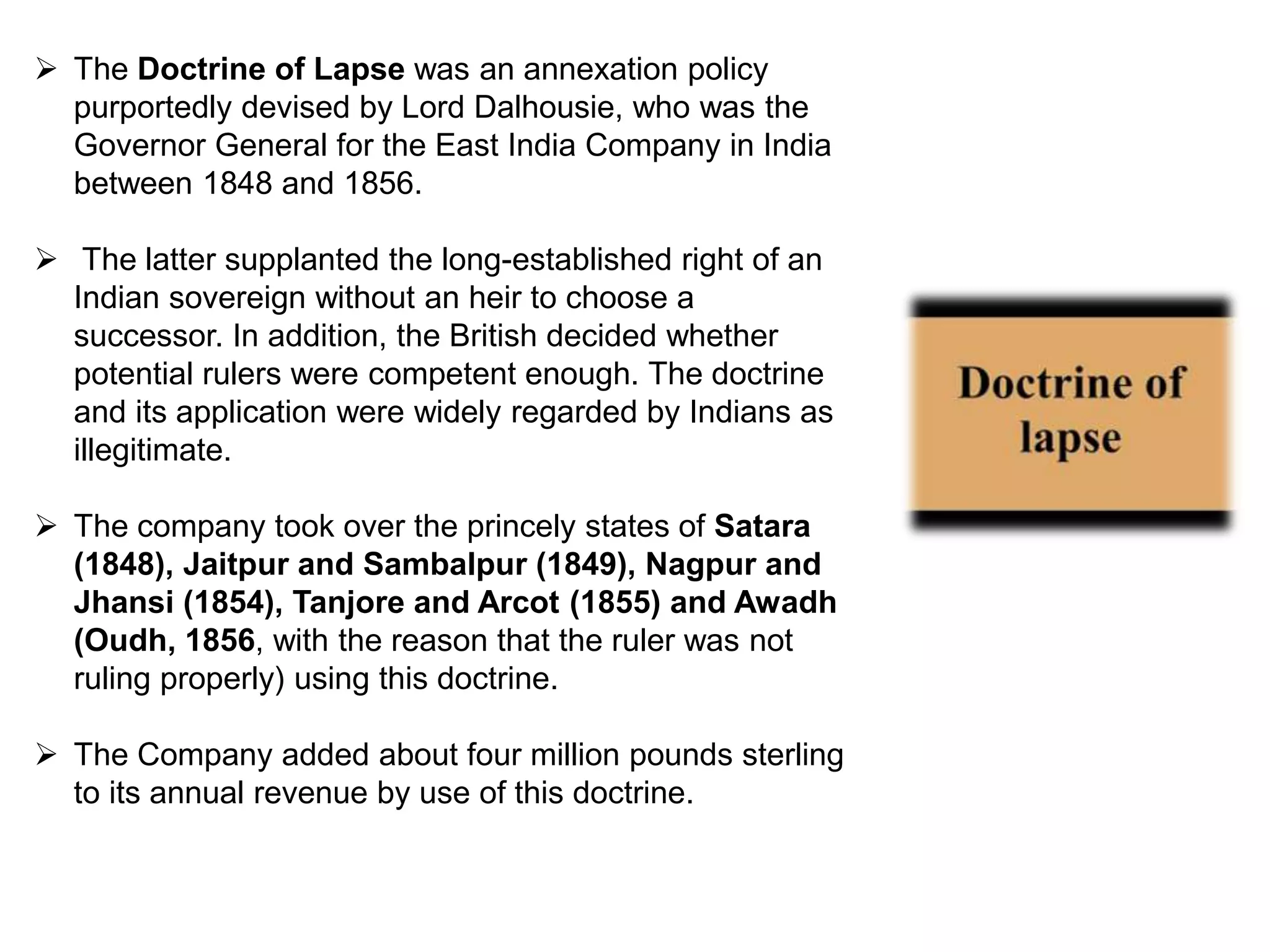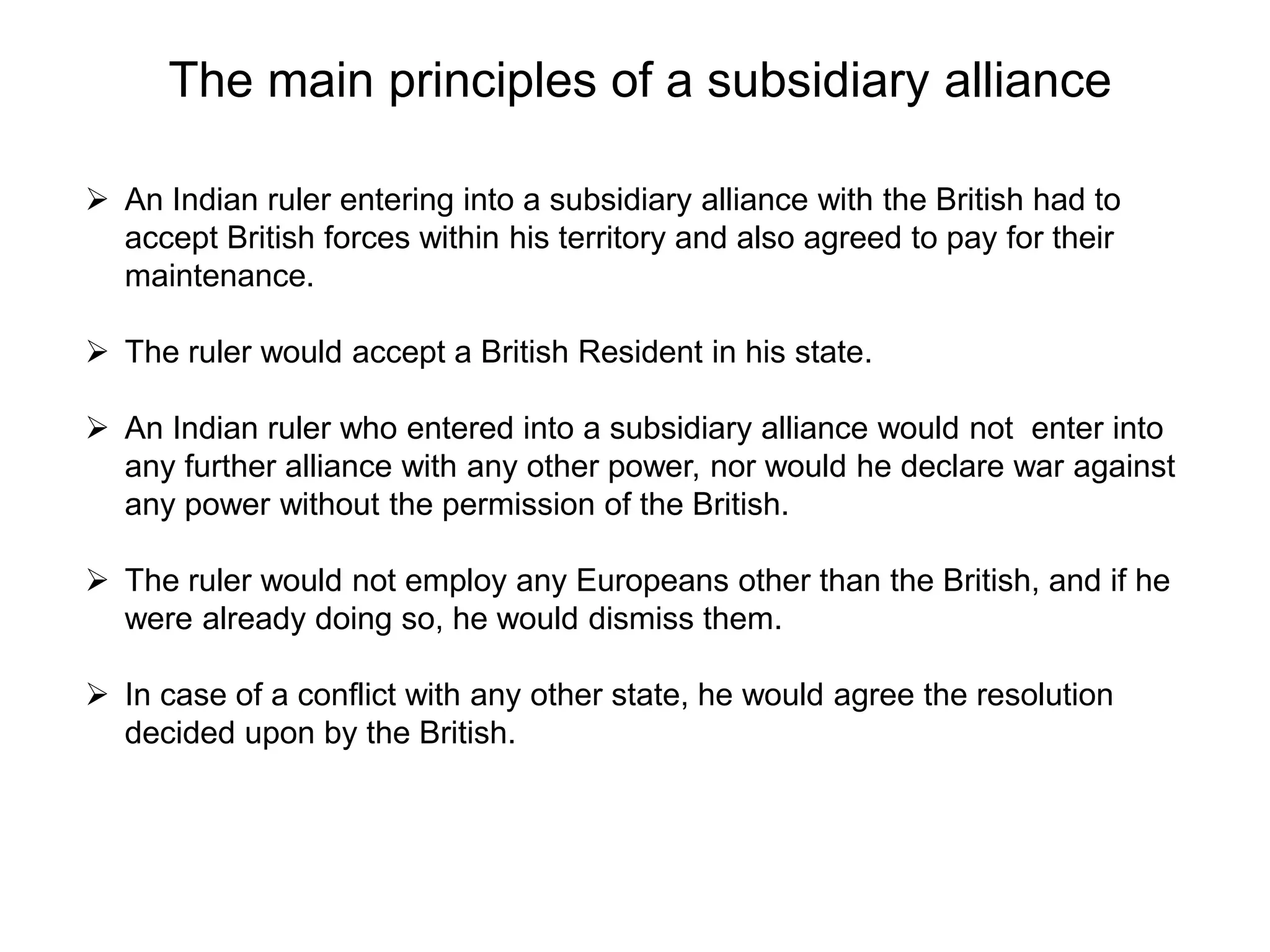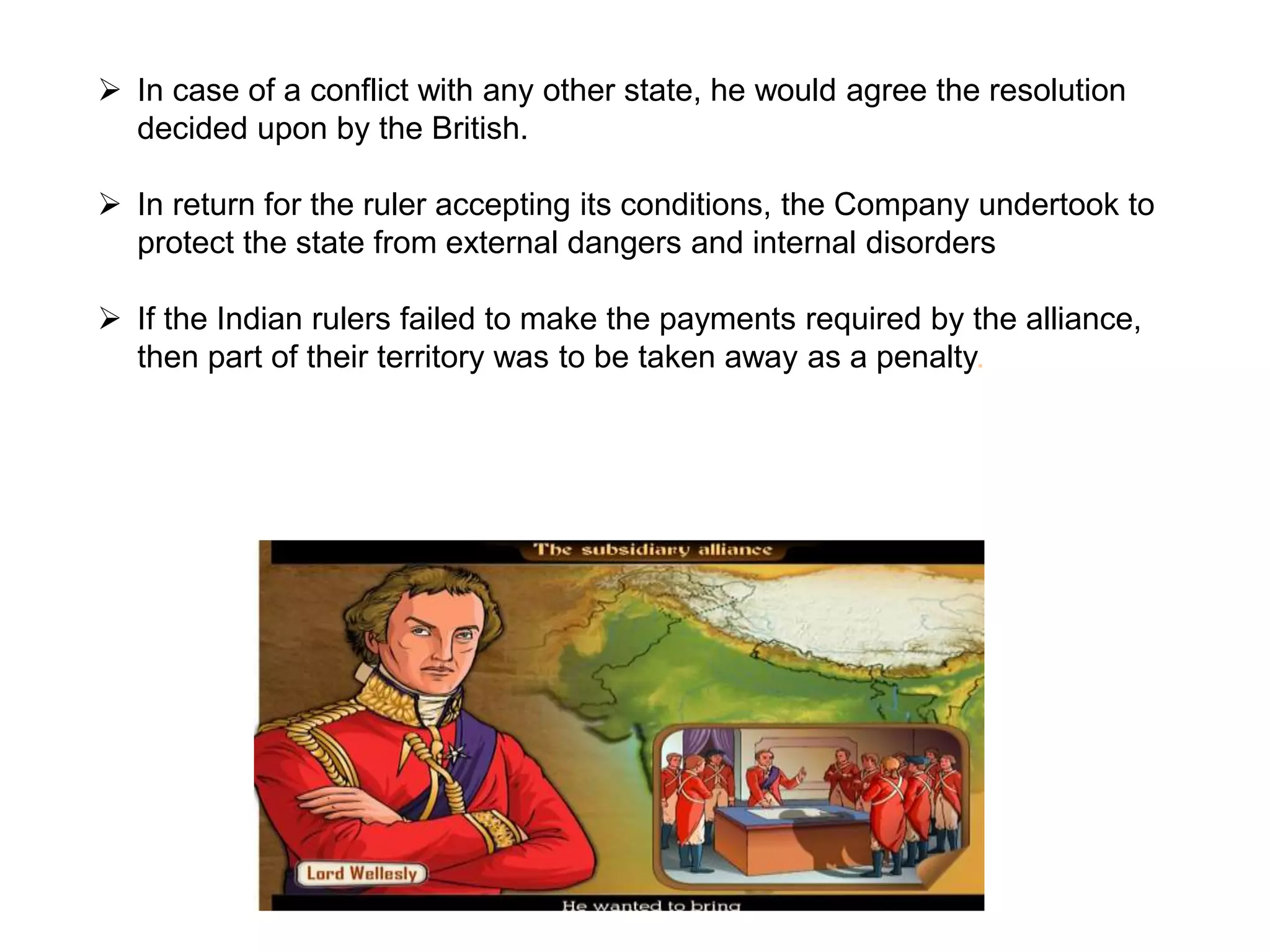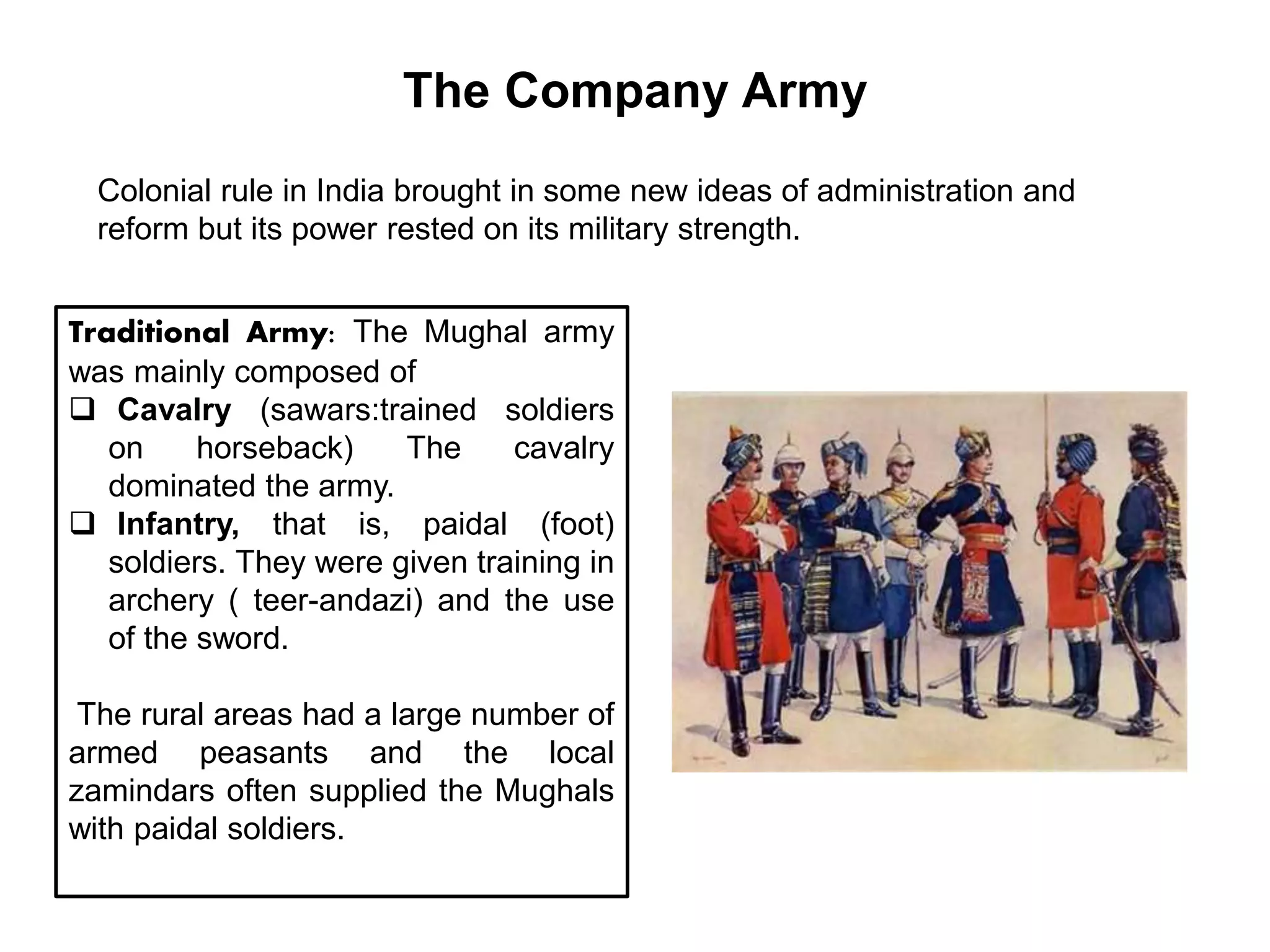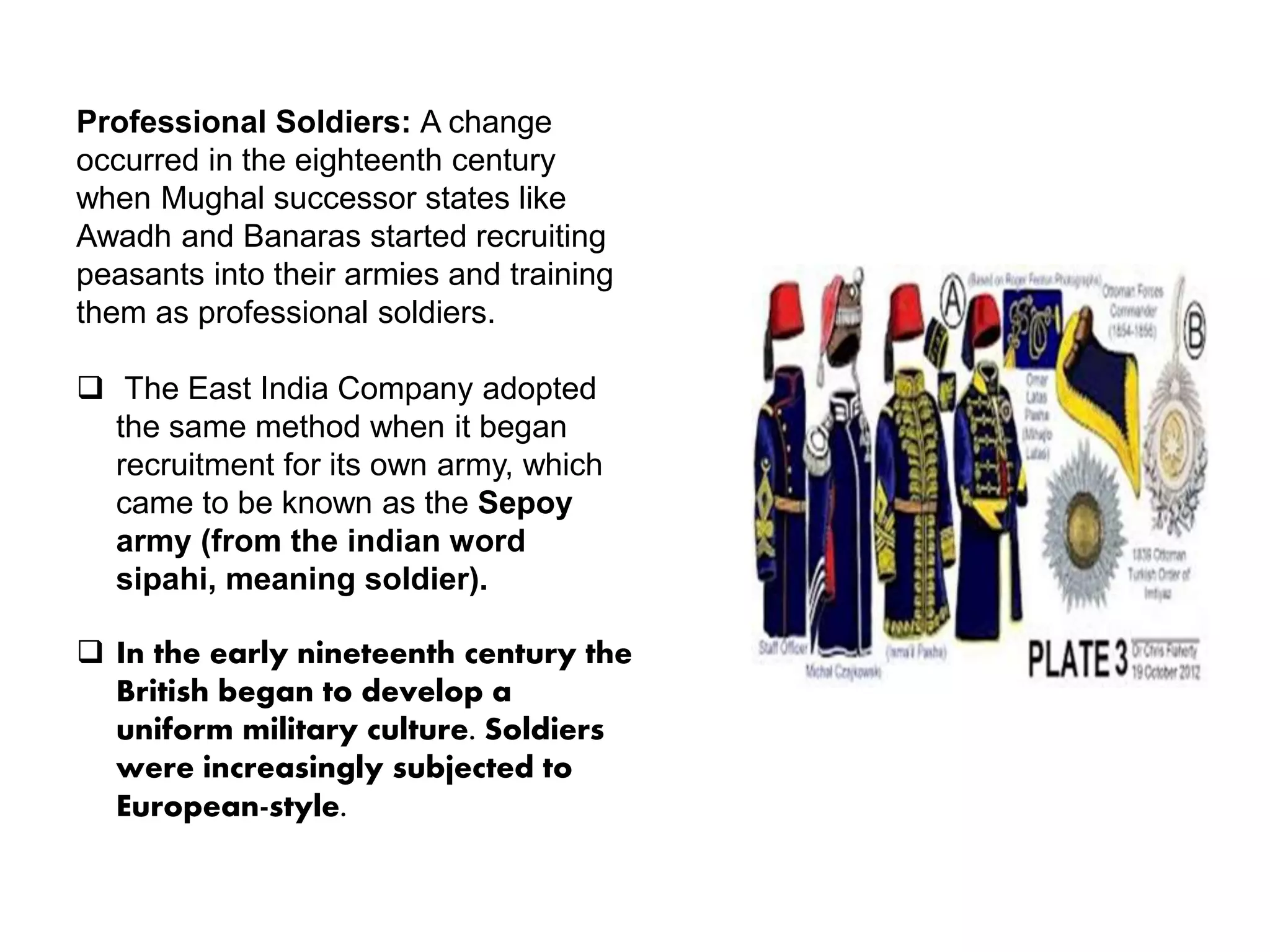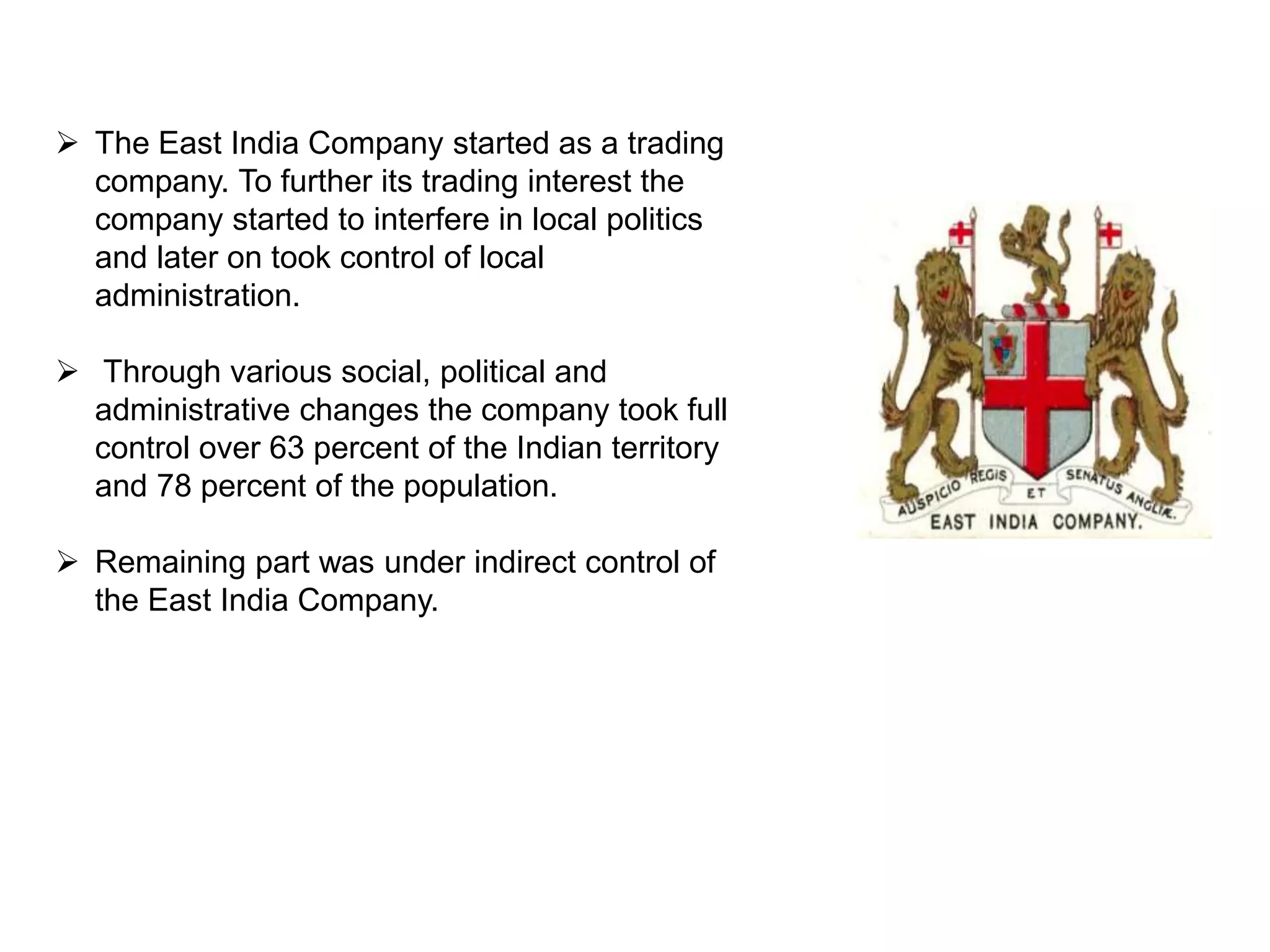The document discusses the rise of British control in India through the East India Company. It summarizes that the East India Company originally formed to trade but later expanded into administration and politics. Key events leading to British rule included the Battle of Plassey in 1757 and the doctrine of lapse. By the mid-1800s, the East India Company controlled most of India's territory and population, establishing the foundations of British colonial rule.

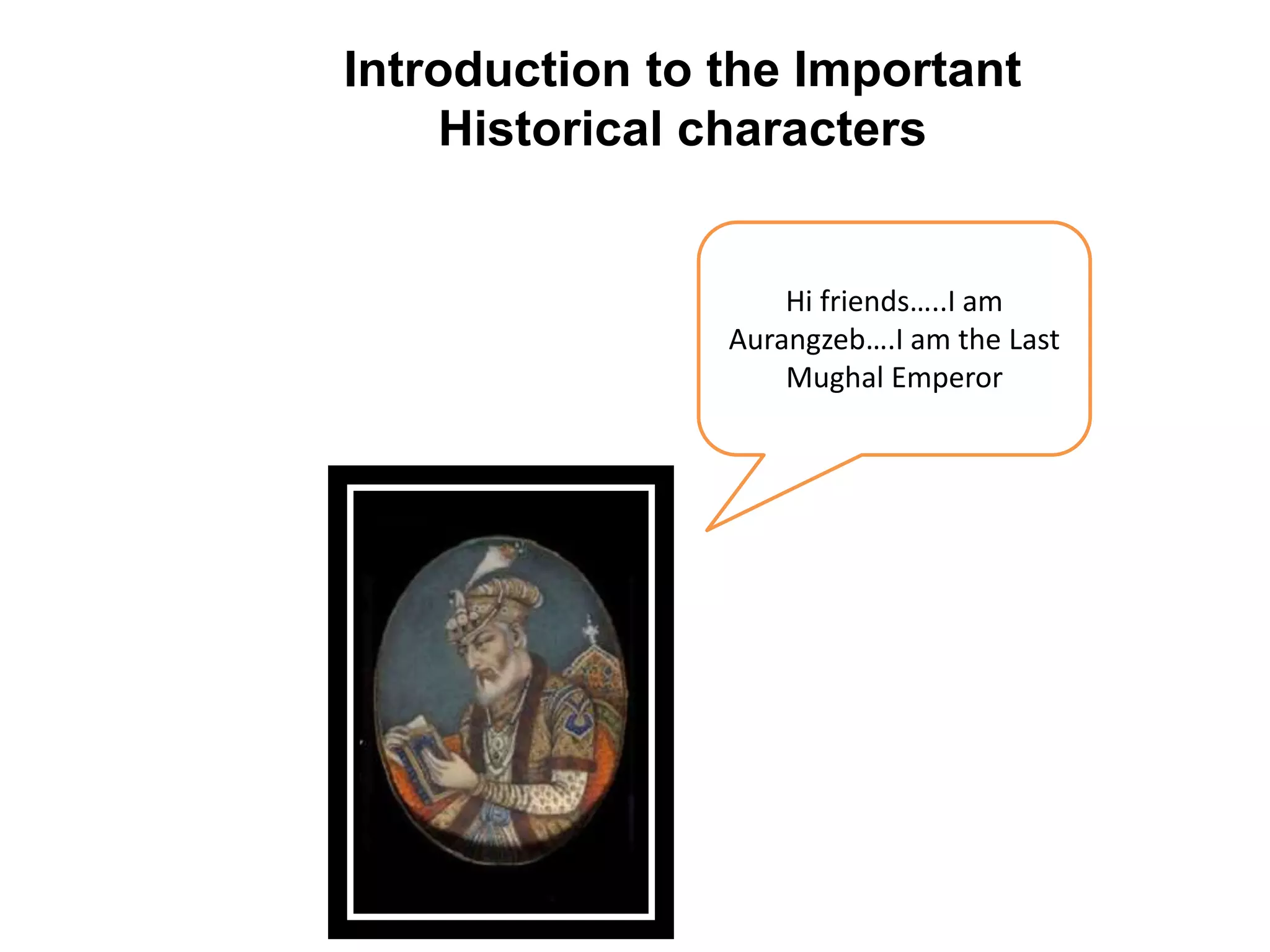

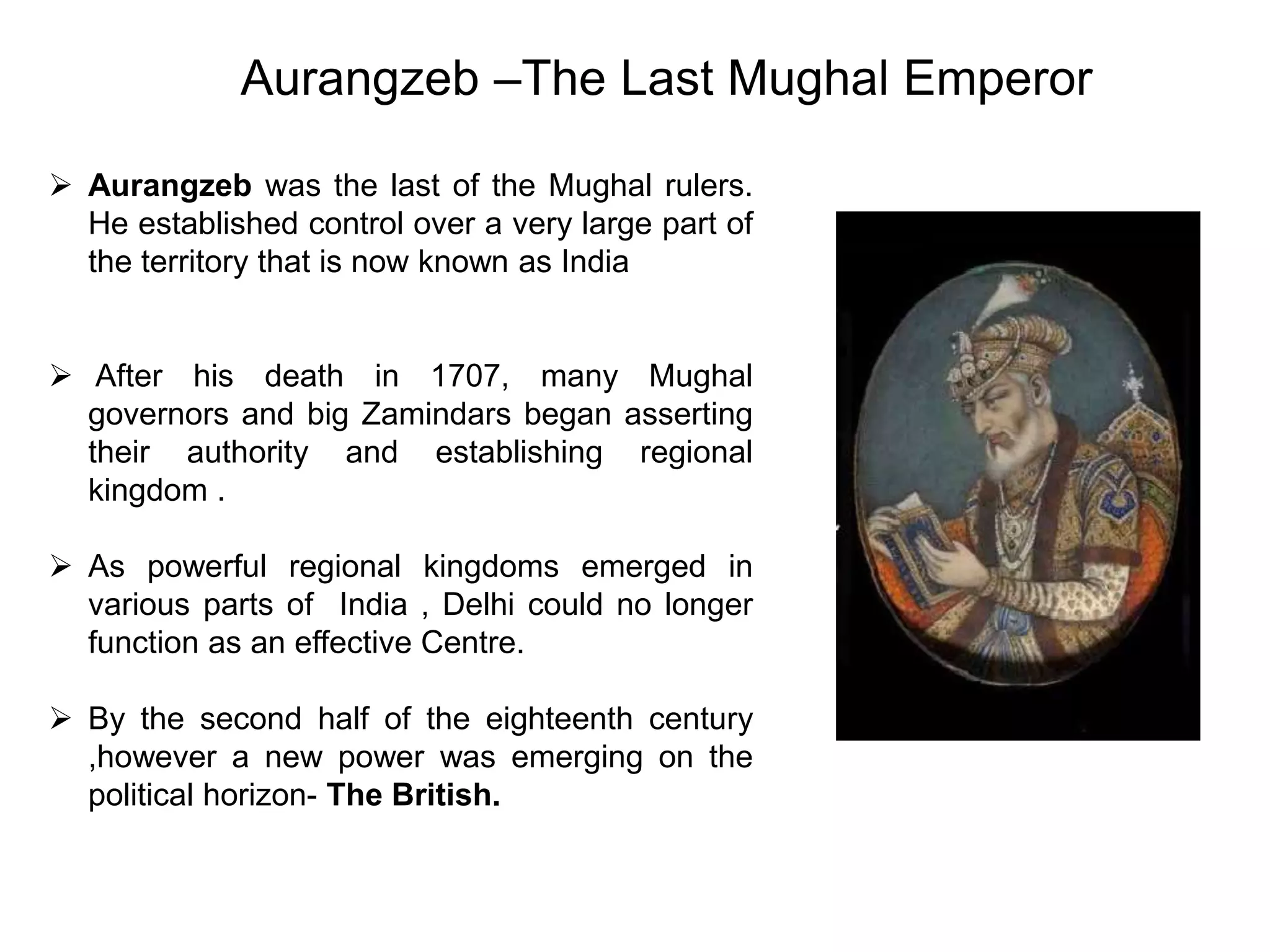

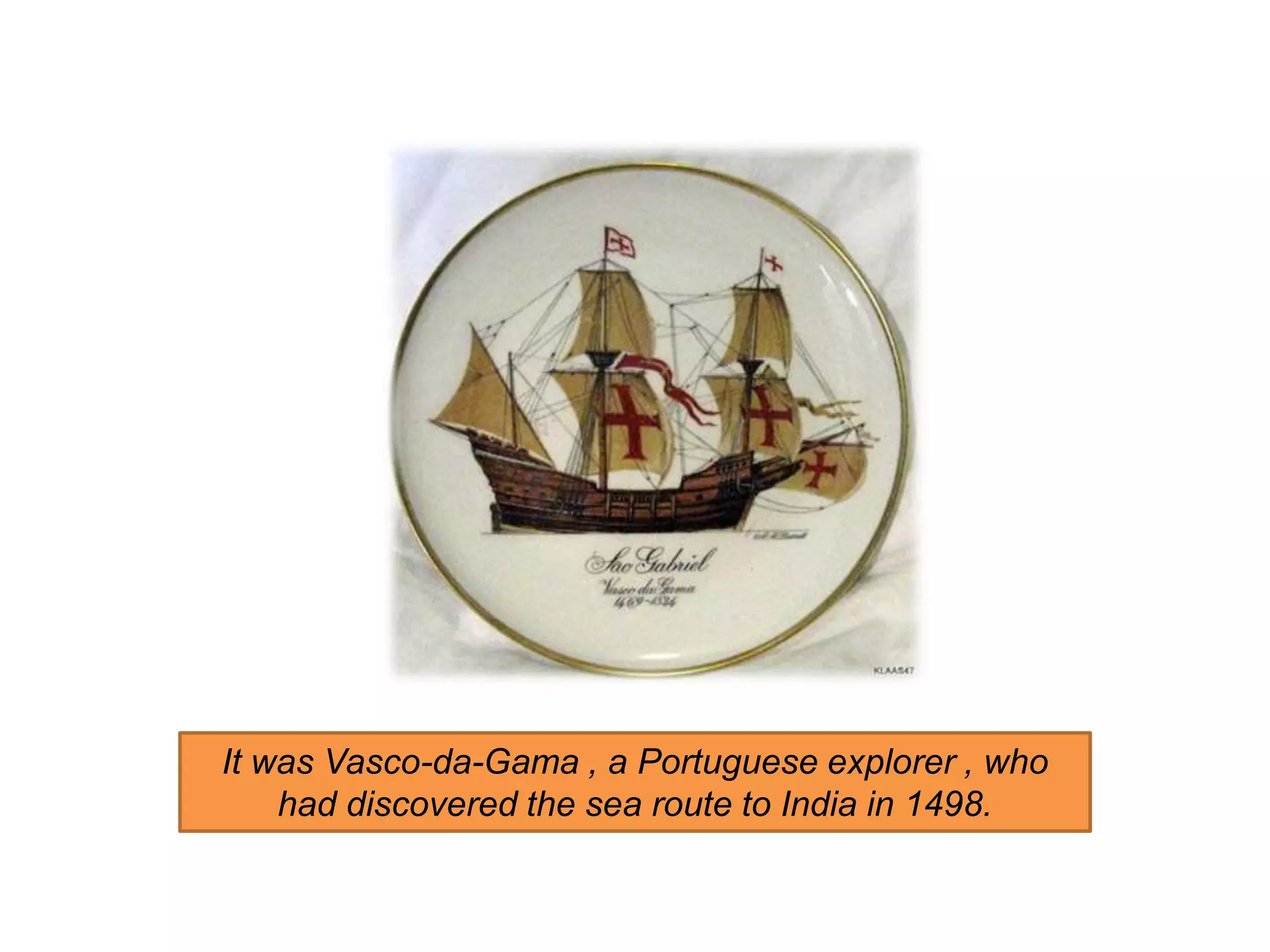
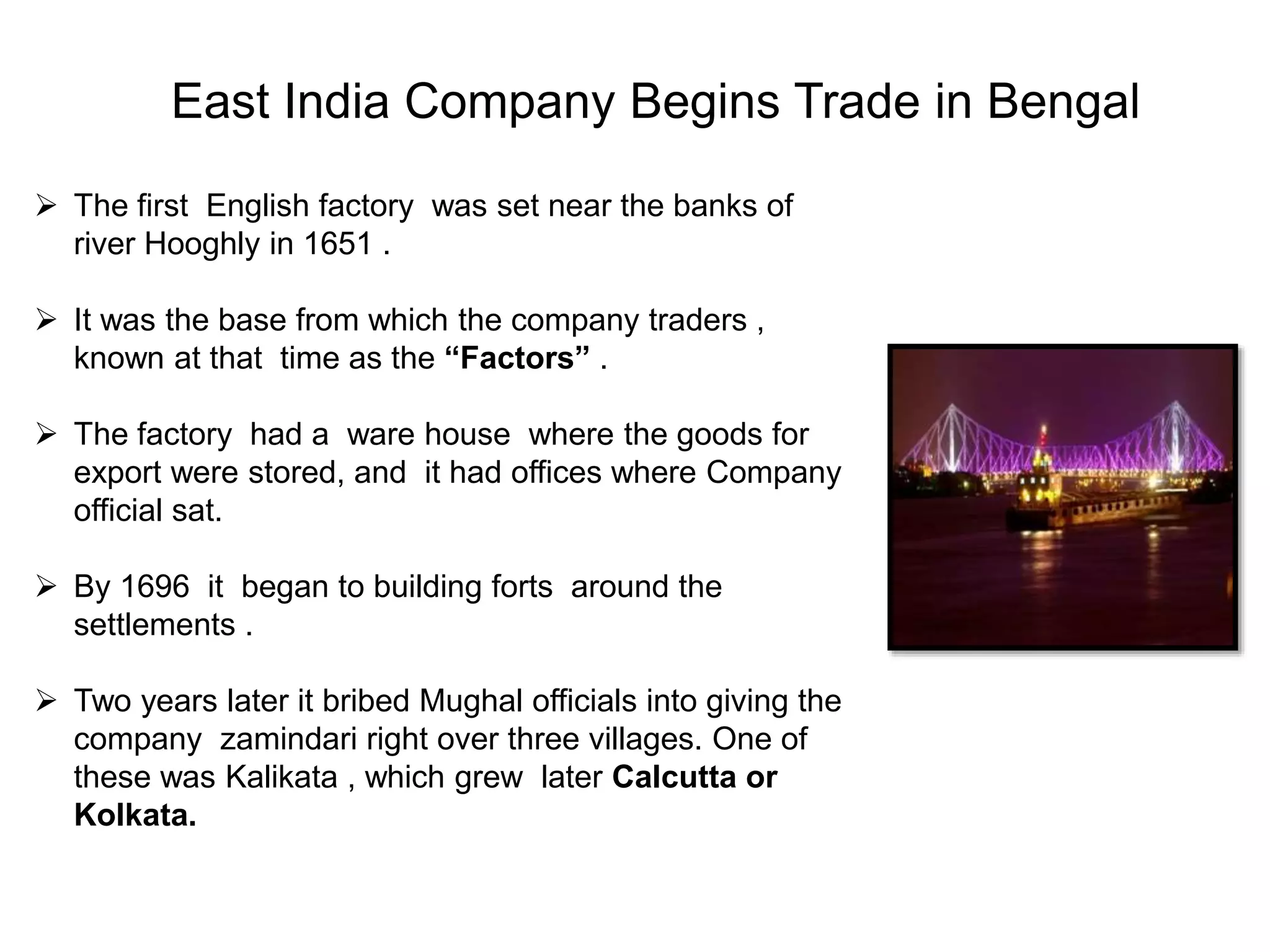
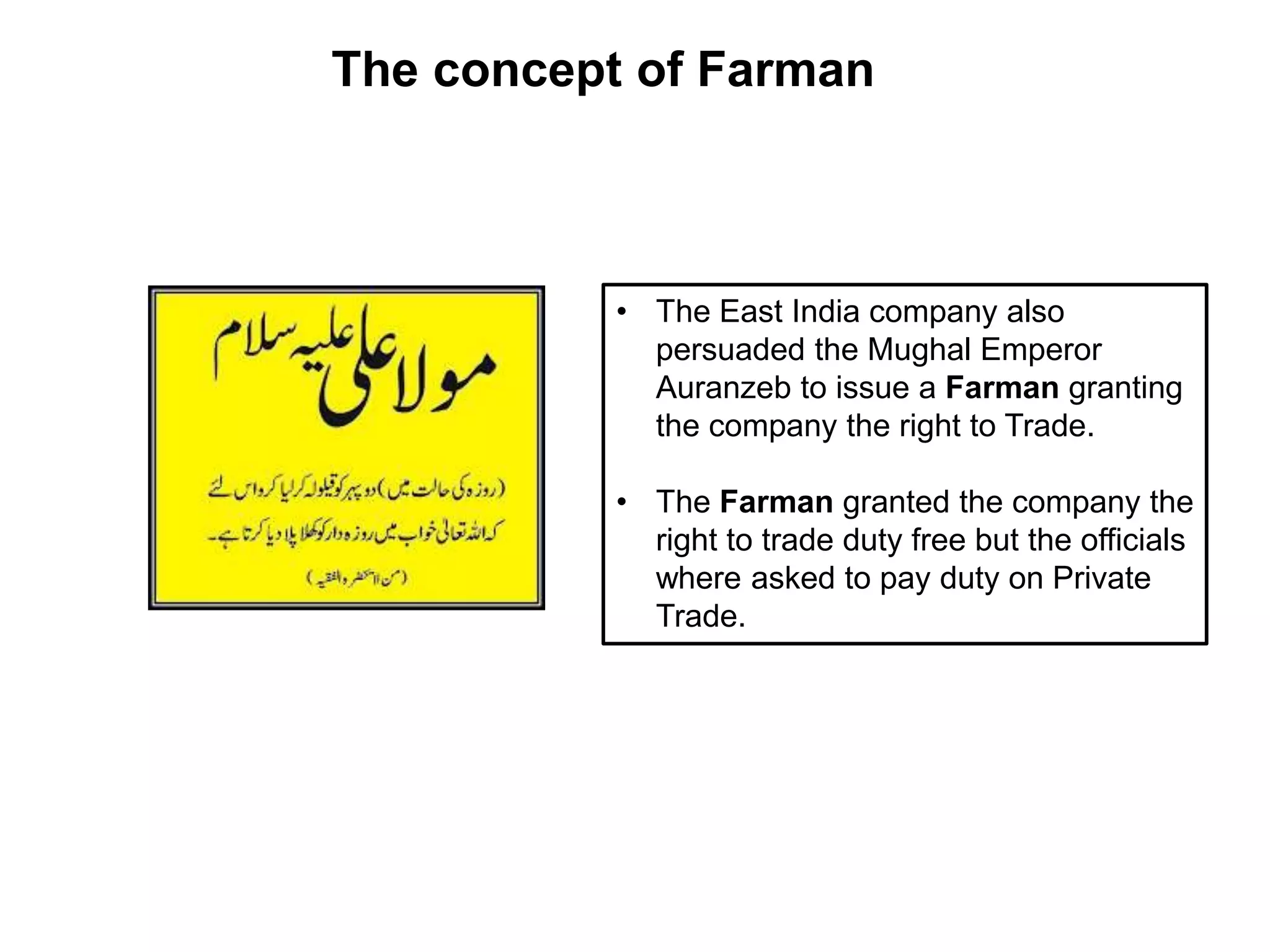
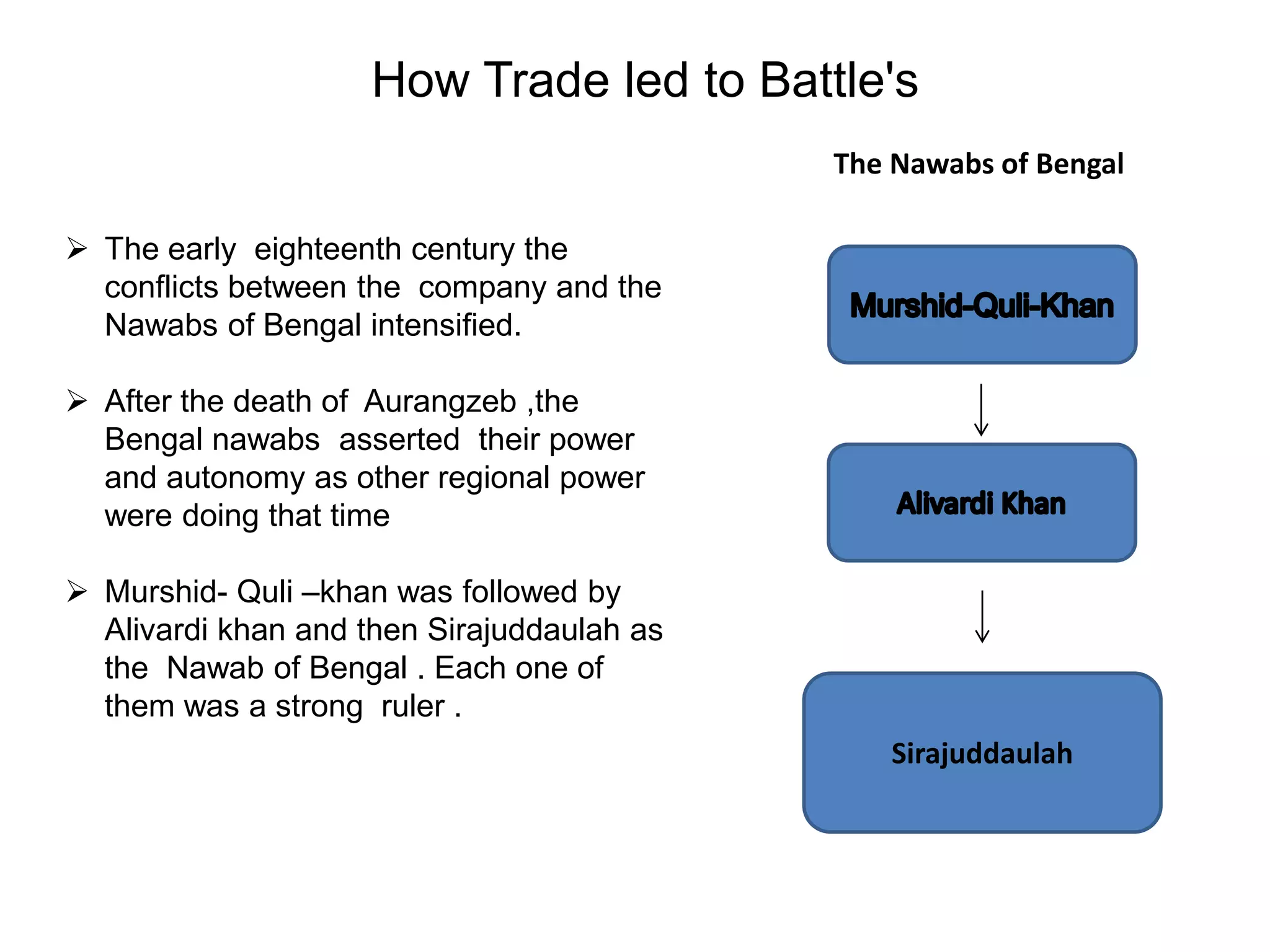
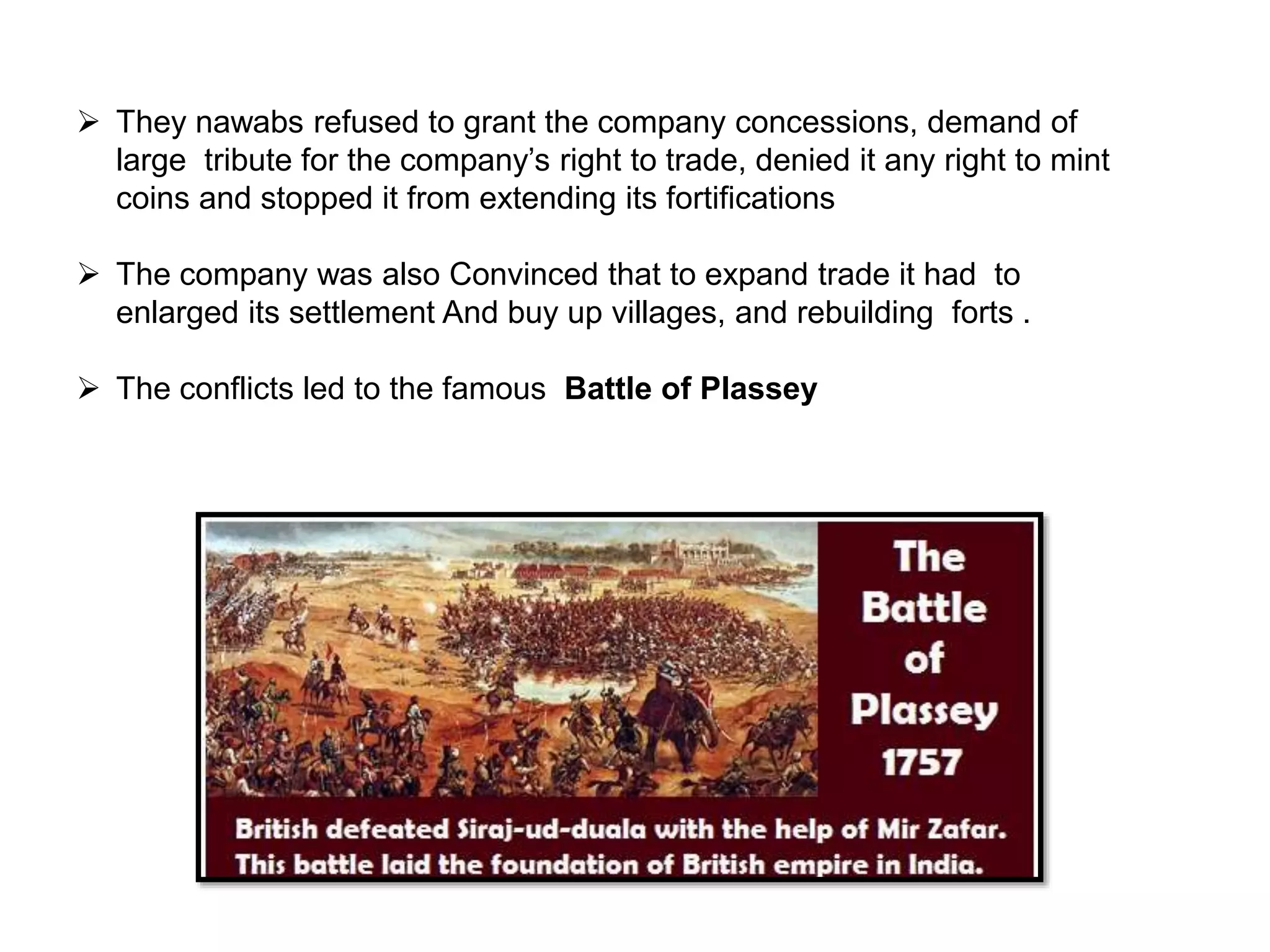
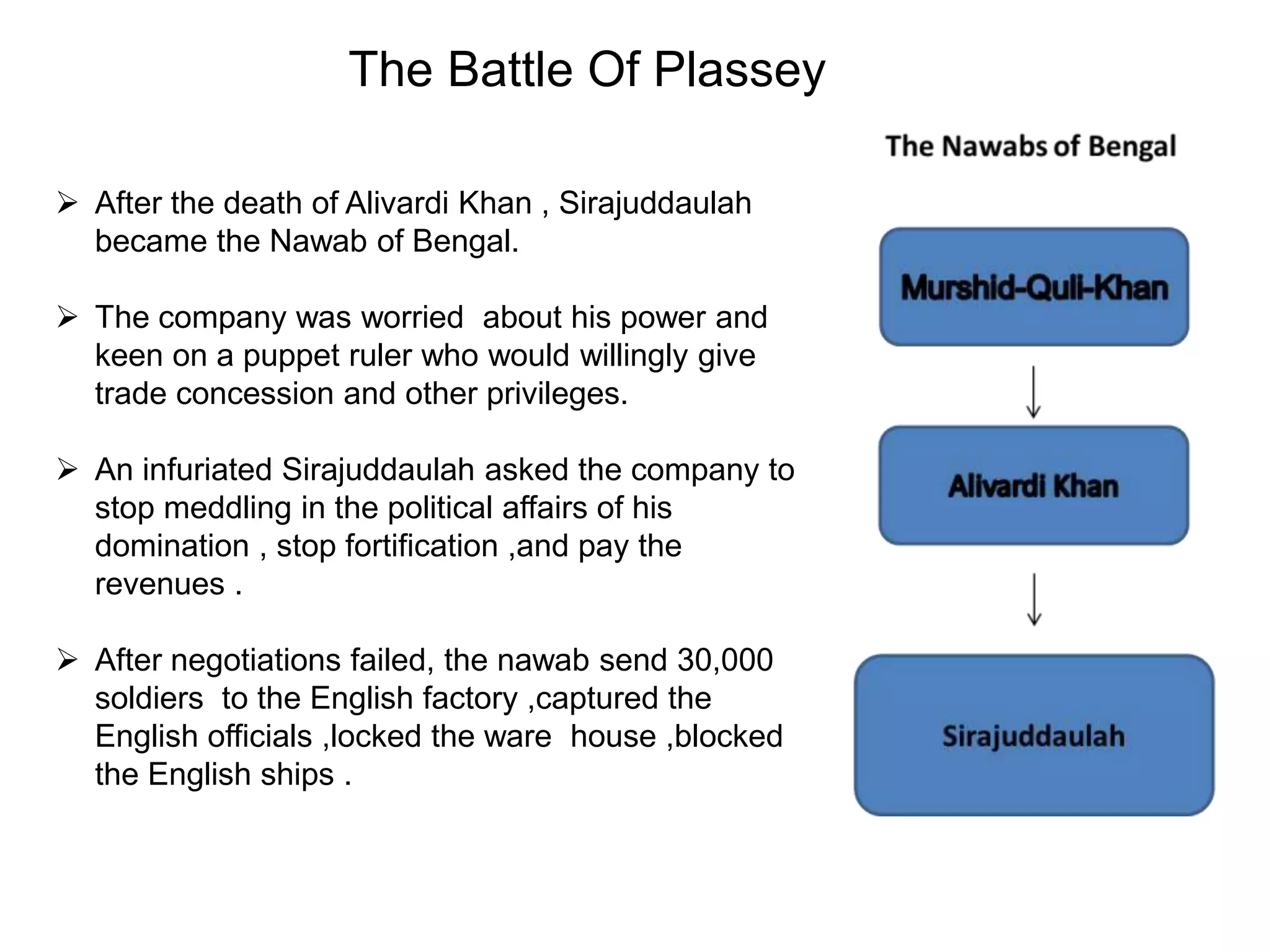
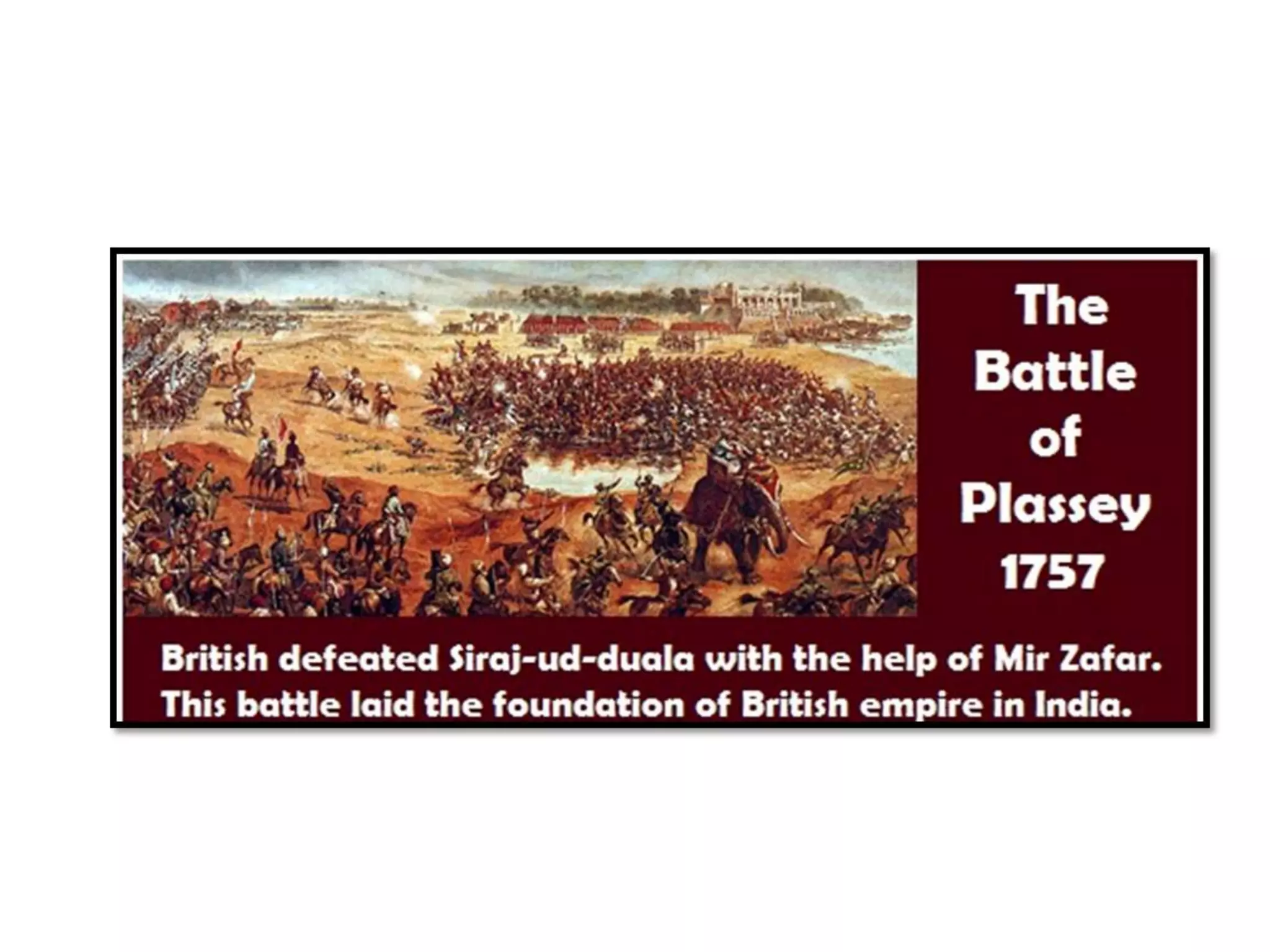
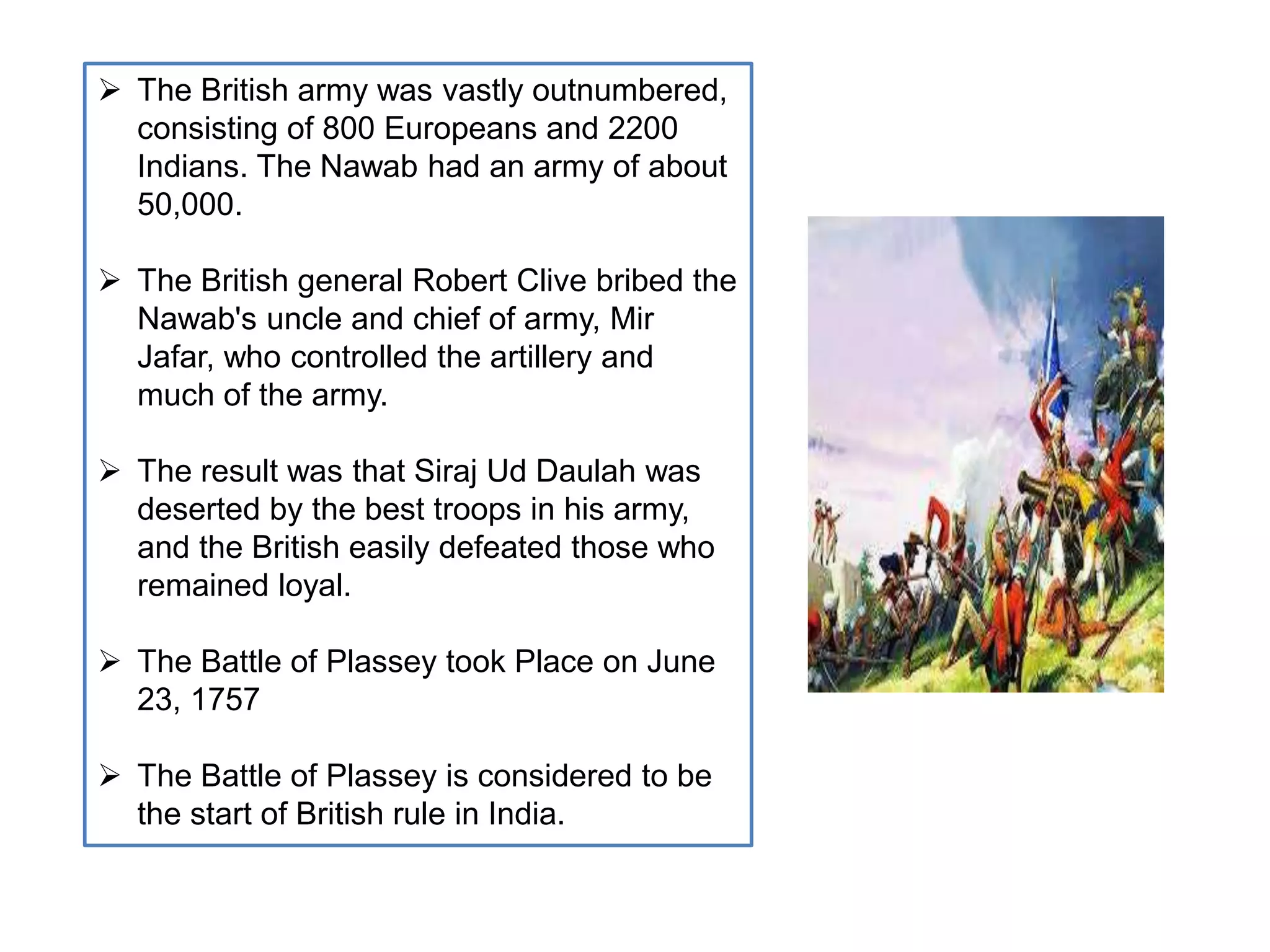
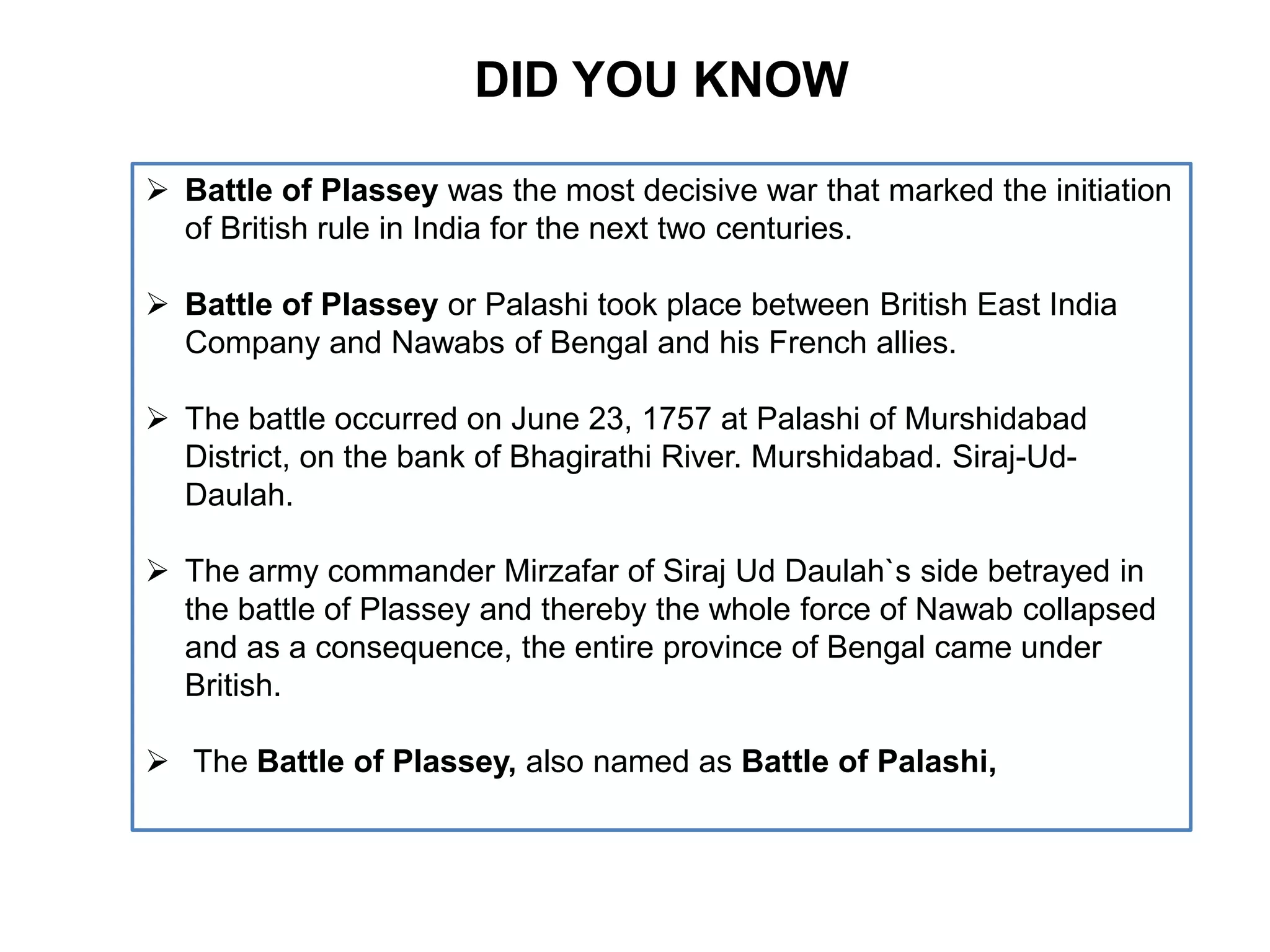

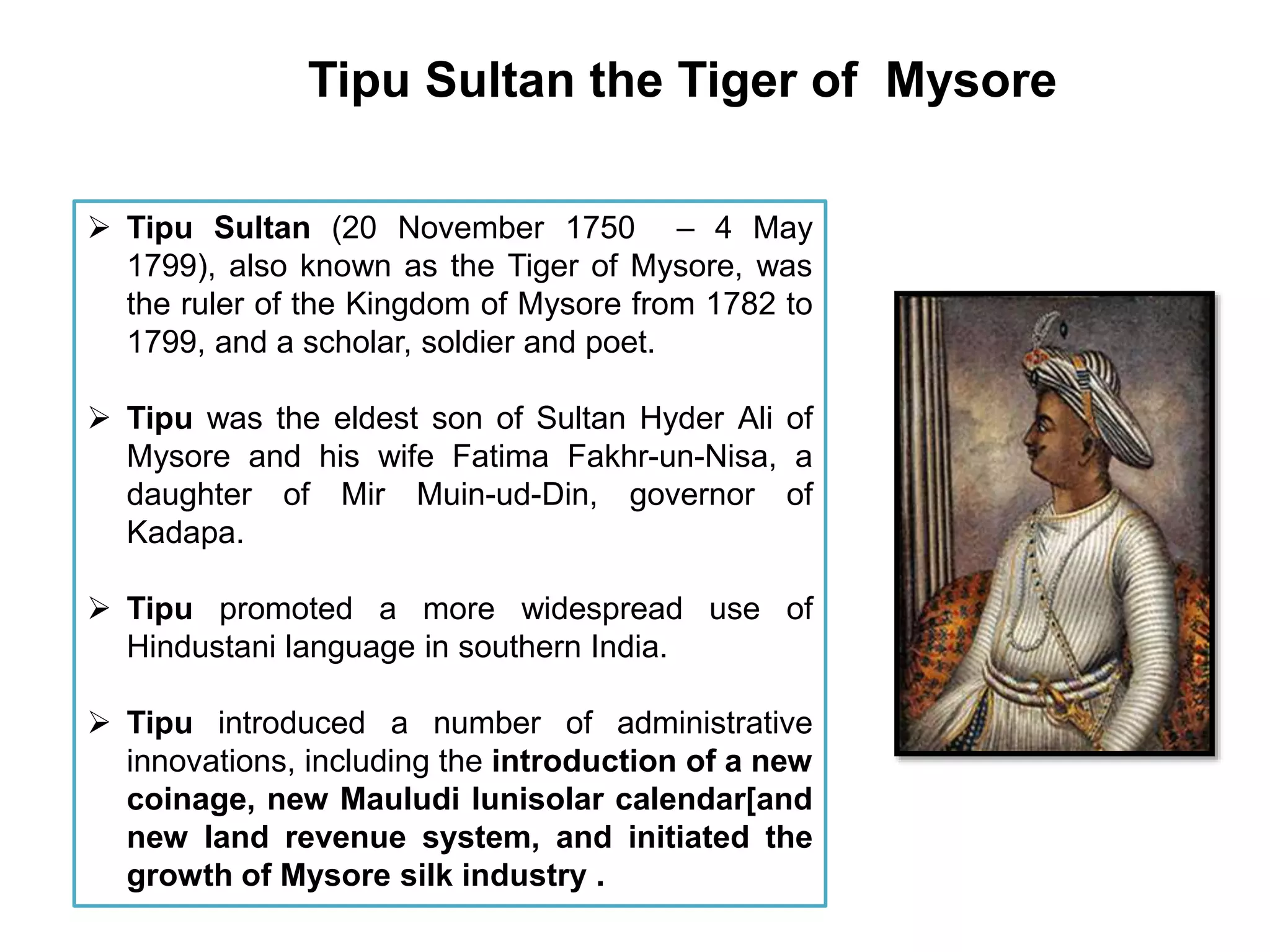
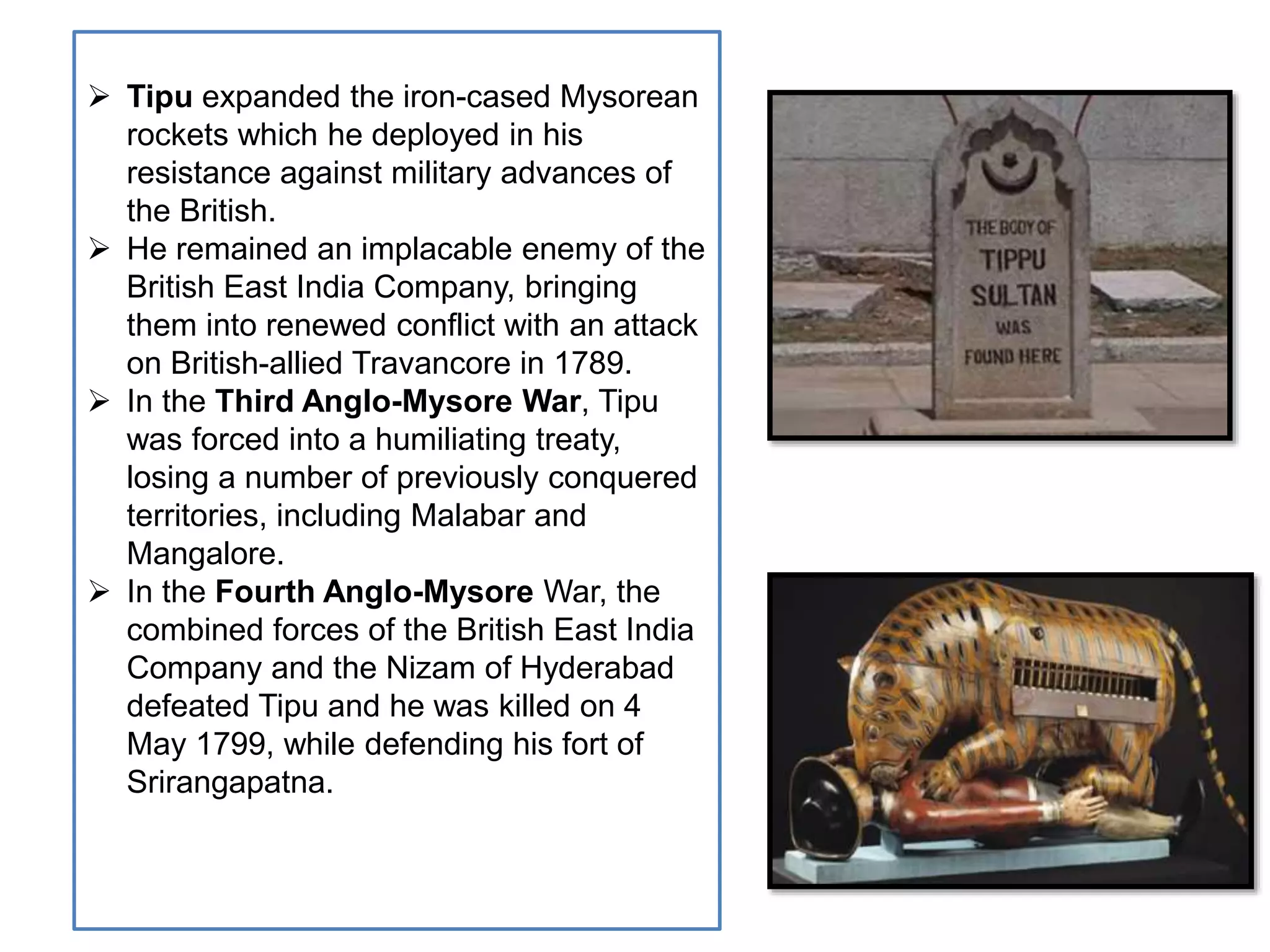
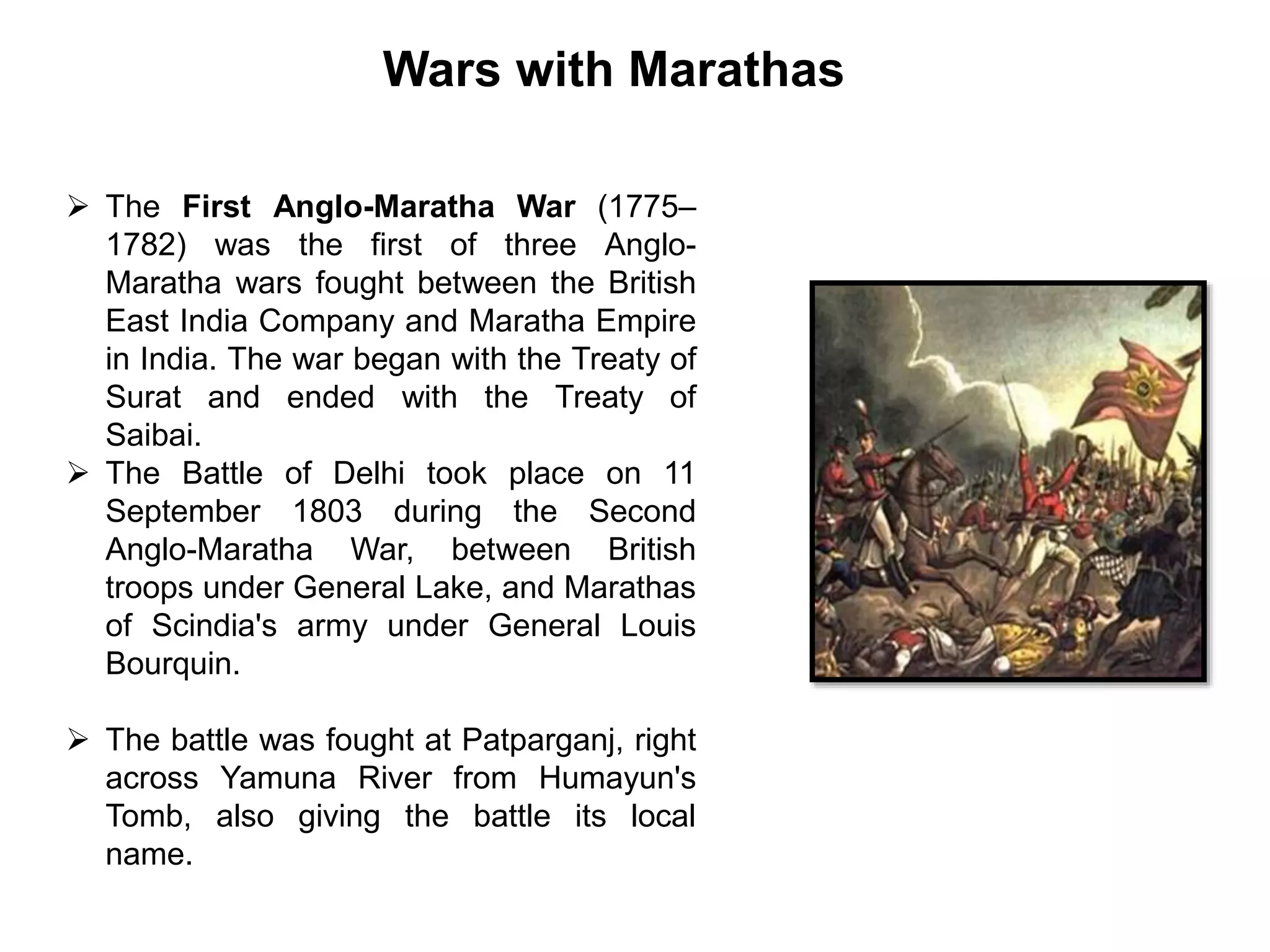
![ The Third Anglo-Maratha
War (1817–1818] was the
final and decisive conflict
between the British East India
Company and the Maratha
Empire in India. The war left
the Company in control of
most of India. It began with
an invasion of the Maratha
territory by 110,400 British
East India Company troops,](https://image.slidesharecdn.com/session1h-chpt2-170609052300/75/History-chapter-2-class-8-19-2048.jpg)
![The Claim Of Paramountcy
Under Lord hasting [Governor-general from
1813 to 1823] a new policy of “Paramountcy”
was initiated . Now the company claimed that
its authority was paramount or supreme , hence
its power was greater than other states .
In order to protect its Interests it was justified
in annexing or threatening to annex any Indian
kingdom . This process ,however ,did not go
Unchallenged.
For example : When British tried to annex an
small state of Kittor, Rani Channamma took to
arm and led an anti- British movement ,she was
arrested in 1824 and died in prison In 1829. But
Rayanna, a poor chowkider of Sangoli in Kitoor,
carried on the resistance . With popular support
he destroyed many British camps and records .
he was caught and hanged by the British in
1830 .](https://image.slidesharecdn.com/session1h-chpt2-170609052300/75/History-chapter-2-class-8-20-2048.jpg)

